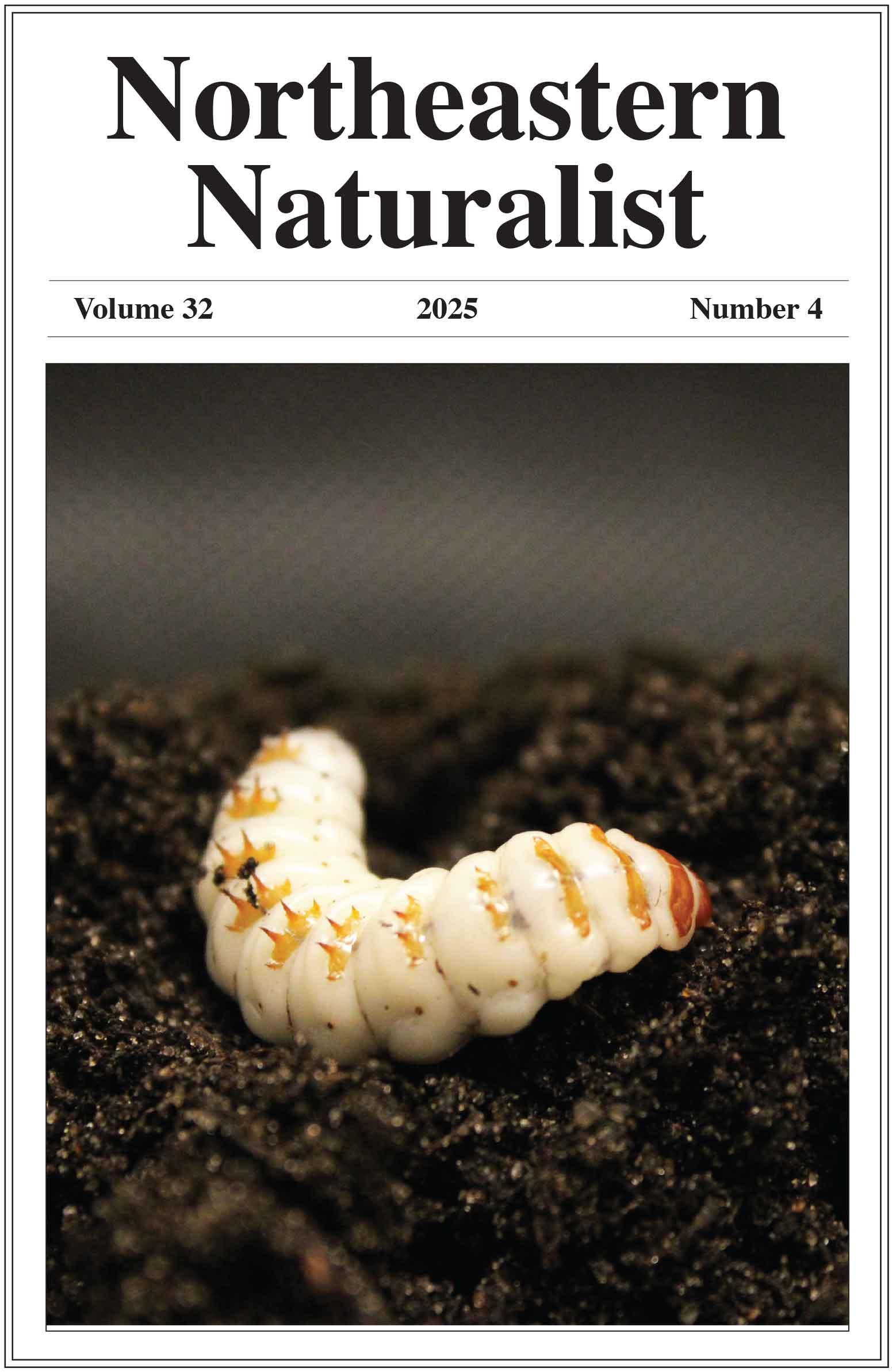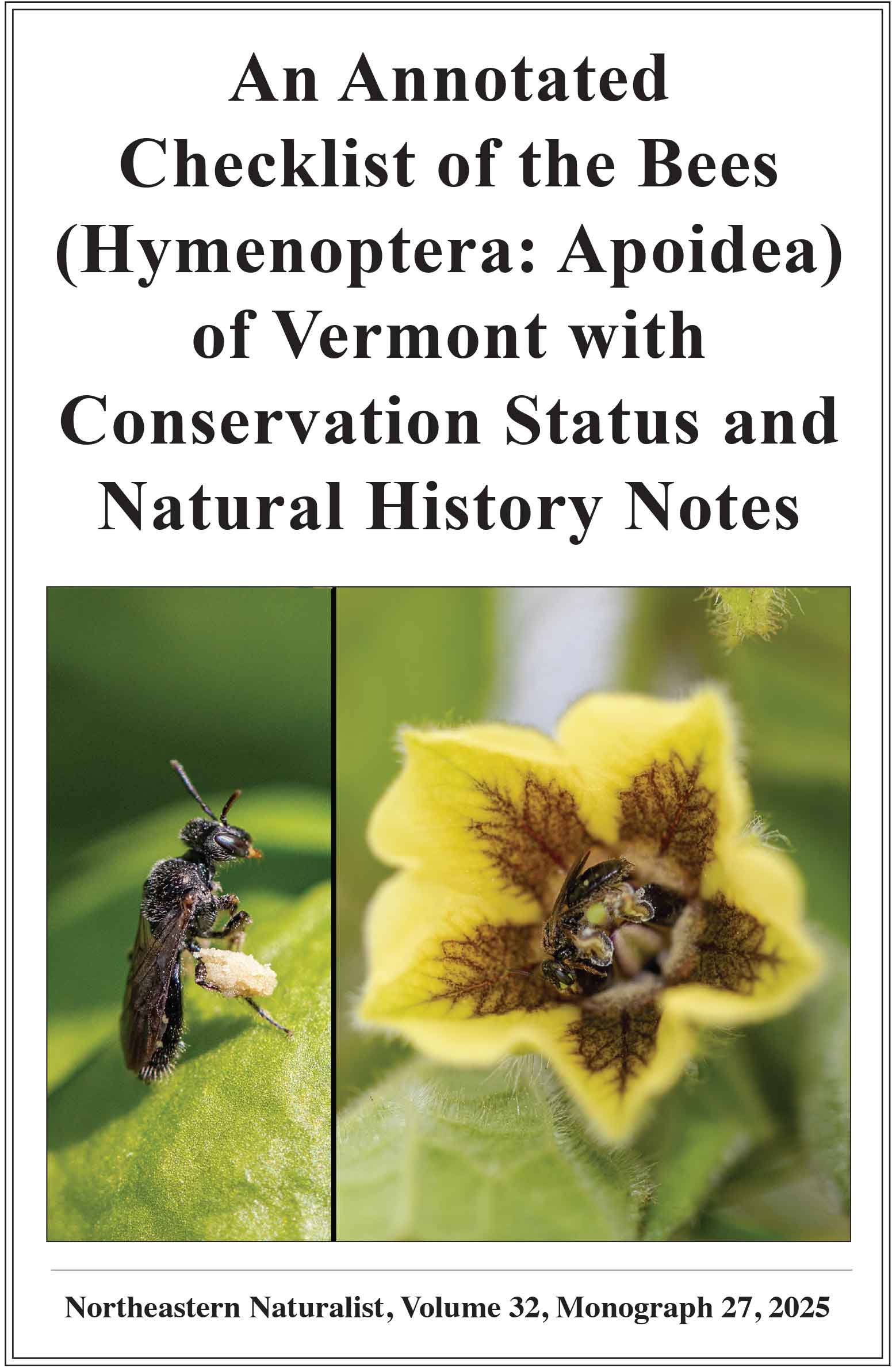Biology and Conservation of Emydine Turtles: Introduction
Michael T. Jones1,*, Lisabeth L. Willey2, and Scott D. Jackson3
1Natural Heritage and Endangered Species Program, Massachusetts Division of Fisheries and Wildlife, 1 Rabbit Hill Road, Westborough, MA 01355. 2Science Applications Program, US Fish and Wildlife Service, 300 Westgate Center Drive, Hadley, MA 01035. 3Migratory Bird Program, US Fish and Wildlife Service, 300 Westgate Center Drive, Hadley, MA 01035. *Corresponding author.
Northeastern Naturalist, Volume 31, Special Issue 12: iii–xxxvii
First published early online: 7 May 2025
Abstract
This special issue focuses solely on the subfamily Emydinae, a clade of 15 turtle species that includes Clemmys guttata (Spotted Turtle), 5 species of holarctic pond turtles (clade Emys), Glyptemys muhlenbergii (Bog Turtle) and Glyptemys insculpta (Wood Turtle), and at least 7 Terrapene species (North American box turtles). Emydine turtles occur primarily in North America and Europe, but they are most speciose in the northeastern US, with notable richness “hotspots” from Michigan to Massachusetts. Most emydine species are threatened by habitat loss and fragmentation, climate change-related processes and disturbance, collection for pet markets, emerging diseases, and other factors explored further in this issue, which affect emydine turtles strongly because they tend to exhibit slow life histories (long lifespan, low reproductive rate) and have limited ability to disperse and colonize new habitats. In fact, Emydinae’s average threat level is greater than either the encompassing family (Emydidae) or their sister lineage (Deirochelyinae). Emydine turtles are reliant on a wide range of terrestrial, palustrine, and fluvial habitats—including seasonal and ephemeral pools—and are found in temperate, subtropical, and tropical habitats. Some species, such as the Bog Turtle and Terrapene coahuila (Coahuilan Box Turtle) occupy rare and declining habitats and are critically imperiled. The 43 manuscripts included here offer a current perspective on the biology and conservation of the clade, including studies of spatial ecology, habitat use, occupancy and abundance, demography, genetics, collaborative conservation and partnerships, and disease. Here, we provide a summary view of the clade with an emphasis on ecology, conservation, and future directions for research and management. We urge continued inter-regional and international collaboration at the species, genus, and subfamily-level, resolution of ambiguous taxonomy, attention to range-restricted lineages, unconventional partnerships to conserve and manage high-quality habitats, and an improved understanding of climate-related risks and resilience.
![]() Download Full-text pdf (Accessible only to subscribers. To subscribe click here.)
Download Full-text pdf (Accessible only to subscribers. To subscribe click here.)
Access Journal Content
Open access browsing of table of contents and abstract pages. Full text pdfs available for download for subscribers.
Issue-in-Progress: Vol. 33(1) ... early view
Check out NENA's latest monograph and Special Issue:













 The Northeastern Naturalist is a peer-reviewed journal that covers all aspects of natural history within northeastern North America. We welcome research articles, summary review papers, and observational notes.
The Northeastern Naturalist is a peer-reviewed journal that covers all aspects of natural history within northeastern North America. We welcome research articles, summary review papers, and observational notes.